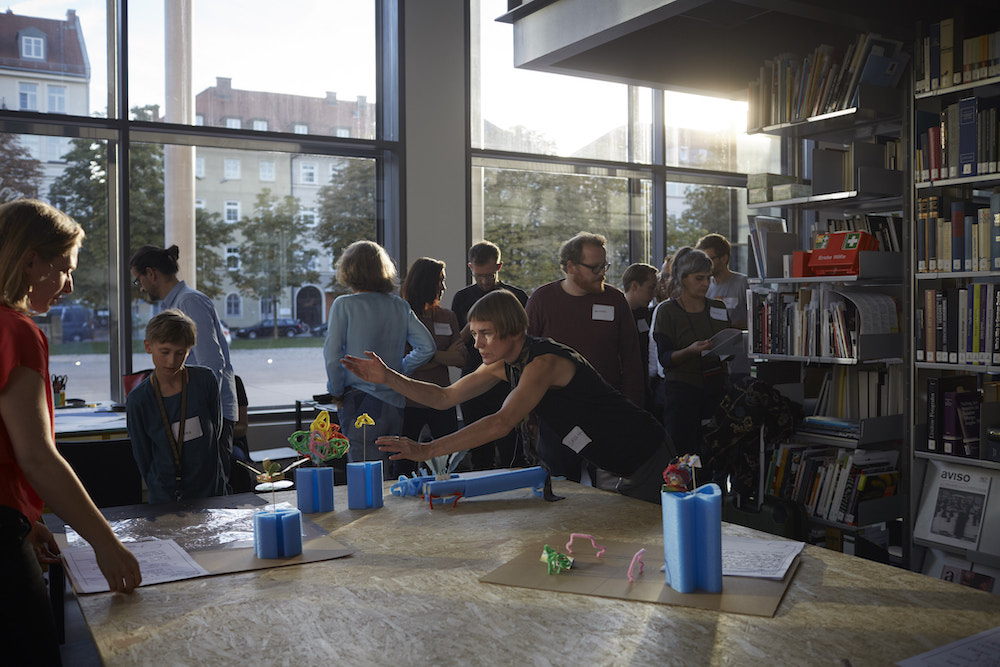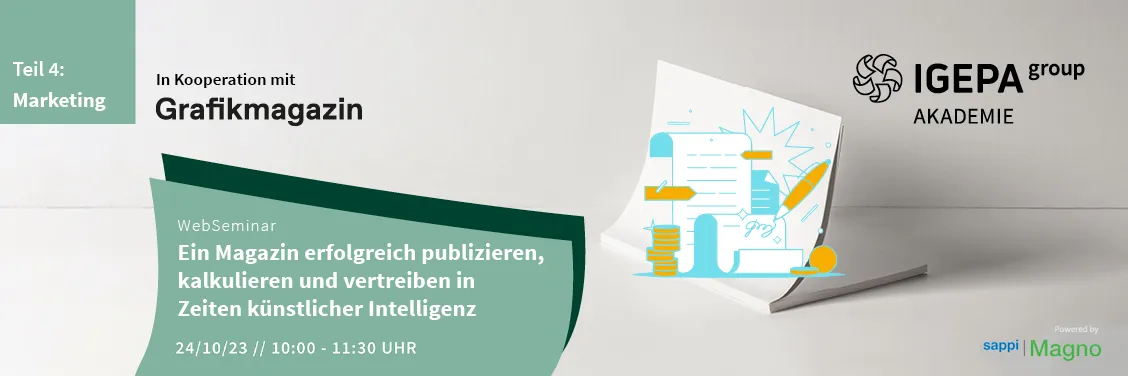Is design capable of creating a different, better world, beyond the pressure to innovate? What solutions does design theory offer for this? In the current issue, we introduce you to designer Sarah Dorkenwald and design theorist Karianne Fogelberg, who question the self-image within design practice in their joint practice as UnDesignUnit. In their projects, often interdisciplinary and in cooperation with other actors and institutions, they want to explore new scope that is needed for the future of design. Pardon, for the future: Dorkenwald and Fogelberg like to talk about the fact that there must be different designs that stimulate our imagination and enable transformation through design.

© Yavor Lalev
Sarah and Karianne, you both worked for form magazine, albeit not at the same time, and got to know each other through this. When you realize that you not only have professional similarities, but also like each other, you often say: "We have to do something together!" What was the trigger for you to initiate projects together?
Sarah: Our first collaboration as UnDesinUnit was for the new natural history museum Biotopia in Munich, which is currently under construction. The founding team wants to use an annual festival to highlight the museum's future content and make it accessible to a broad public. We were commissioned to curate it in 2018 and 2019, each with a thematic focus. We used experimental, playful, sensory and participatory formats to sensitize visitors to these 21st century developments, such as biodegradable or synthetic materials at the interface with biotechnology and fashion.
Is it usual for museum planning to go this far and even plan a carefully curated festival in the development phase?
Sarah: In this case, yes, because it's still so long until the museum opens. The team wants to make visible what they are working on and pick up future visitors at an early stage.
Karianne: Biotopia aims to overcome the dualistic thinking that sees humans on the one hand and nature on the other as separate entities. This is a very contemporary approach in current scientific discourse, but also in the arts and design. This independent approach, which is still relatively new for many natural science museums, needs to be communicated. The name "Biotopia" already reflects this: although it is based on utopia, it also claims to focus more strongly on ecological connections and interactions. This is one of the reasons why the collaboration with us came about: we work in an interdisciplinary way and with design as a method that can be used to conceive mediation formats. It is part of our curating process not only to invite representatives from different disciplines, but also to develop formats that make very complex content tangible in different registers and bring together current research with design, art or architecture.

© Verena Hägler
You work locally with various institutions. Do you feel that Munich is a special location?
Sarah: Munich offers many opportunities. There are many companies, foundations, institutions and research facilities that are open to supporting projects in the context of design and culture at the interface of science and research. So far, we've been lucky enough to have a lot of opportunities in Munich, such as the Biotopia Museum or the Munich Creative Business Week (MCBW). We have worked with the Neue Sammlung and cooperated with the Kammerspiele. Now we have just been commissioned by Netzwerk Klimaherbst to realize their kick-off event with a Speculative Dinner Performance and we have developed and implemented the "Archive of Subjective Memories" for the municipal art space Lothringer 13.
Karianne: It was a very nice project, partly because it gave Sarah and I the opportunity, as non-Munich residents who have lived here for many years, to look at the more recent history of the city and the Haidhausen district in particular. We used oral history methods, i.e. the spoken narration of history, to compile subjective memories. It was very interesting to talk to people from four decades about questions as diverse as: What can an urban art space achieve? What were the framework conditions, but also the wishes and visions that were projected into such a space? What can be derived from this for the present and the future?
How many people have you spoken to?
Sarah: We conducted ten interviews, we spoke to Dr. Michael Meuer, the former head of the Fine Arts Department at the City of Munich's Department of Culture, who founded the space as an artists' workshop; the curators Courtenay Smith and Uli Aigner, artistic positions such as Anna McCarthy and Wolfgang Flatz are represented. We also spoke to Bernd Bayerl, co-founder and operator of the legendary Café Größenwahn in the neighboring building. Over the years, there have always been new definitions of what these spaces can be, beyond the exhibition space. A real subculture has also developed. The nice thing about Lothringer13 is that it is constantly being redefined as a carte blanche, every time there is a change of curator, which is part of the concept.
Karianne: As part of the ongoing consolidation process, for which we have been commissioned by the Department of Culture and the curatorial team of Lothringer13 around Lisa Britzger and Luzi Gross, the contemporary witness interviews will continue to be heard there and loans will be permanently accessible. The "Archive of Subjective Memories", as the title suggests, does not claim to be complete...
Sarah: ...the idea is rather that it can grow. That you create structures within which the archive can continue to develop. The narrative of the past forty years doesn't have to be told chronologically. We also had a reception office during the exhibition. The idea was that basically anyone who still had any memories could "bring them over", so to speak, and we could archive them there.

© Constanza Meléndez
The aspect of space for creatives is one that runs strongly through our Design & Research section. I also notice that your practice always correlates in some way with the respective spaces and works differently accordingly. You write yourself that you are interested in the "border areas and new free spaces" of design. Can you briefly outline this?
Sarah: We are concerned with space in a figurative or extended sense, i.e. the space for thought that we want to stimulate with our formats. We try to use the means of design to create formats that make certain socially relevant topics tangible. This could be the question of how drones will determine our everyday life and living space in the future, which we then examine in an interdisciplinary exchange in a Future Making Lab, or, as at the kick-off event for the Climate Autumn, the question of how we will feed ourselves in the future, an equally important and difficult-to-answer topic. With the "Speculative Dinner Performance", we wanted to create an experience that allows people to engage with climate change without it remaining abstract, while at the same time not remaining dystopian, but opening up opportunities for action. Our aim is to create positive experiences and raise awareness of various alternatives in order to make complex issues accessible from multiple perspectives and show the extent to which we can help negotiate our future. For example, the Speculative Dinner Performance poses the question of the superfood of drought. This could not only benefit us humans, but also insects and other creatures as well as the soil. At the same time, it must be able to cope with changing climatic conditions.
Karianne: We are sometimes asked what concept of design we are actually working with. In a dinner performance like this, it's not obvious at first what role design plays here. This is also reflected in our name UnDesignUnit. The first Speculative Dinner Performance at the Kammerspiele, which we conceived and realized together before we founded the studio, was therefore also called "Undesign". We wanted to convey that this speculative format is not primarily about designing and creating things in the conventional sense. Instead, we first want to ask the question of how certain structures, but also ways of acting and thinking, can be questioned and deconstructed, or "undesigned" as it were, and how new insights can be gained. It is about how transformation can be brought about through design. In the dinner performance, we work with narrative means that are not immediately perceived as a form of design. We devise scenarios and have worked with Christine Krauss from ChirpFood in an interdisciplinary exchange to find suitable ingredients: How can you tell a speculative future scenario such as "rising sea levels" or "extreme weather events" not only with narrative means, but also with the help of a menu, its ingredients and forms of preparation, and use them to open up a perspective on the future? In this respect, the menus convey fundamental ideas and questions...
Sarah: One clearly designed component was our "matrix cards", which the participants dealt with after tasting the three menus. The cards are each dedicated to an ingredient from the menus, for example quinoa, lupins or Swabian Alb lentils, potatoes or watermelon rind kimchi, which are keyworded accordingly with properties that are important in the context of climate change. Using these cards, the participants were able to answer certain questions, such as what they would like to do without or what they would like to eat more of, and thus create their own future menu. This worked very well, both as a visual image and as a way of engaging with it personally. It is participative, but also very playful. It shows that there is not one answer, but a spectrum of possibilities.

© Oliver Killig
In the editorial team, we often talk about the fact that there is no substitute for appealing to all the senses when it comes to design. But the fact that you play with this ability is certainly something you have to explain more often in relation to your projects, isn't it?
Sarah: It is not enough to approach the design of our living environment solely on a rational, scientific or technical level. We work with design methods to visualize possible futures and make them tangible for all the senses. The resulting engagement with certain social issues or technological developments is intended to encourage people to take a critical and self-determined approach to the question of how we want to live in the future.
Karianne: Another dimension of our work is the area of science communication. On the one hand, we are interested in how design can accompany transformation: How do you make complex content accessible and derive approaches for action from it? The aforementioned Speculative Dinner Performance and our Future Making Lab are examples of this. This is a participatory workshop format in which participants work in small, interdisciplinary groups to explore and scrutinize current concepts for the future, such as technology-supported concepts for care in old age or autonomous driving, with regard to their various effects and use speculative design and sketches and model making to create alternative futures. It is a core competence of design to be able to visualize things. We are also fascinated by how design can be used as a medium in science communication - especially with regard to the very complex challenges we face with climate change, the transformation of cities and advancing digitalization. An incredible amount of research is being done on all of this, there are many findings, but we often notice this gap between knowledge production on the one hand and communication on the other, and that it is rarely illustrated in an accessible way what this actually means for us. We are also working with this.
Is it your experience that there is an awareness in responsible positions of the major role that design can play?
Karianne: Yes, speculative design methods are already being used here to some extent, for example at the Fraunhofer Gesellschaft - similar to us, except that we work independently as a studio and specifically look for clients for this. It's not just about being able to visualize a certain future, but different futures. Without the usual specifications and in a playful way, we can determine which futures are not only feasible, but also desirable.

Would you say that you are optimistic about the future?
Sarah: Yes, I would say so. As a creative person, I always look positively to the future, because I think there will always be a solution. Karianne and I are constantly producing thoughts, ideas, concepts and formats. And by working together with others, we can drive these forward and implement them.
Karianne: Yes, because we are particularly interested in the potential for action that we have, but which we are perhaps not yet using. At the dinner performance, for example, some people came up to us and said: the future isn't that bad ... at least it tastes good! (laughs) We deliberately opted for a scenario that doesn't leave everyone completely hopeless, but instead opens up concrete, tangible visions. Our approach to action and design is based on a fundamental optimism.
With regard to our joint projects, I would like to talk about the concrete steps you have taken. Evenings like the Speculative Dinner Performance are at the very end of a journey, and your everyday life is a prerequisite for this. What does your everyday life look like as theorists, researchers and designers? Do you have a routine that you follow?
Karianne: We have a jour fixe on which we schedule our appointments so that we can stick to certain fixed working hours during the week. This is a way of harmonizing our different areas of work and schedules.
Sarah: We have a shared office on the Isar, so we have a place where we can meet, sometimes we just work together remotely. I need the framework not to be too rigid so that things can flow. But sometimes we also have times when there is a lot to do, for example we recently had three dinner performances in a row, after which we need time to take a deep breath and reflect so that new things can emerge.

© Yavor Lalev
What about rest periods for you? When you have as much output as you both do - where do you get your input from?
Karianne: I read a lot because I've always had a great affinity for text and writing, and I also write myself. But I don't always read design-specific things, my inspiration also comes from contexts outside of design. I worked for many years here at the art academy on an interdisciplinary teaching program and was always interested in looking at issues from different perspectives. That was the reason why I switched back from design journalism to academic work back then, because I was driven by the need to find answers to the questions that arose and that I couldn't really pursue in the context of design journalism with its short publication frequency. This year, for example, I took out a surprise subscription from a Berlin bookshop. Once a month, I receive an independent magazine from completely different areas, and the random principle ensures very different reading experiences. Among the previous issues, for example, was a magazine dedicated to seeds from many different cultural-historical, artistic and scientific perspectives, while other issues dealt with the cultural history of carpets or contemporary dance. Other spectrums that I find very exciting. Apart from that, I also read daily and weekly newspapers, literature and much more...
Sarah: I wouldn't necessarily speak of rest phases. More like production and inspiration phases. In phases where we are working intensively on projects, we have extensive research phases where we naturally delve deep into a topic. As a result, I read a lot of specialist material. But I also write, for example for Nomad Magazine. Text, writing and literature are very important to me. I have designed many books as a designer. It's a great and important medium. Of course, I have a large bookshelf with lots of books at home, and I love rediscovering something there from time to time. I love being able to simply pick up information.
One final question that I would like to ask: If you had to start all over again and decide on a different career, which one would it be?
Sarah: I think it's wonderful the way it is. (laughs) Maybe I'd like to study design again, but take a different path, for example go more into design research. Maybe product design too. Another big dream of mine has always been to write a novel, but I can still do that. (laughs) That's actually the exciting thing, that life is still changeable and remains open until the end.
Karianne. I don't know if I can speak for both of us, but I don't define myself so much by the discipline as by the activity. We have the privilege of being able to work in many facets at the interface with design. It's not just the case that design shapes society. Society also shapes the ways of thinking and practices of design, so there is an interaction. I have always had the opportunity to move into the areas where my interests have driven me: From design journalism back into more academic work, into research and teaching, and then back into application via UnDesignUnit. This feedback is also very important to us at UnDesignUnit. Because of course you can acquire this knowledge, but what do you do with it in the end? Can you take on a mediating role with it? Design as scientific communication, for transformation, or as a means of speculation - I'm actually very satisfied because I've never felt this to be a constraint, but something you can work with very freely.
Sarah: Perhaps we should add that although we mainly work in pairs, we also see ourselves as a collective. That's why we've added a UNIT to UnDesign. Depending on the task, other units can emerge in the collaboration. But our collaboration alone is very enriching, because we come from different contexts and look at things differently, and each of us has our own strengths. This, as well as the different content and constellations of our collaboration, makes our work incredibly diverse and varied. I think that's wonderful.
Interview: Sonja Pham
Learn more about the practice of UnDesignUnit
UnDesignUnit on Instagram





